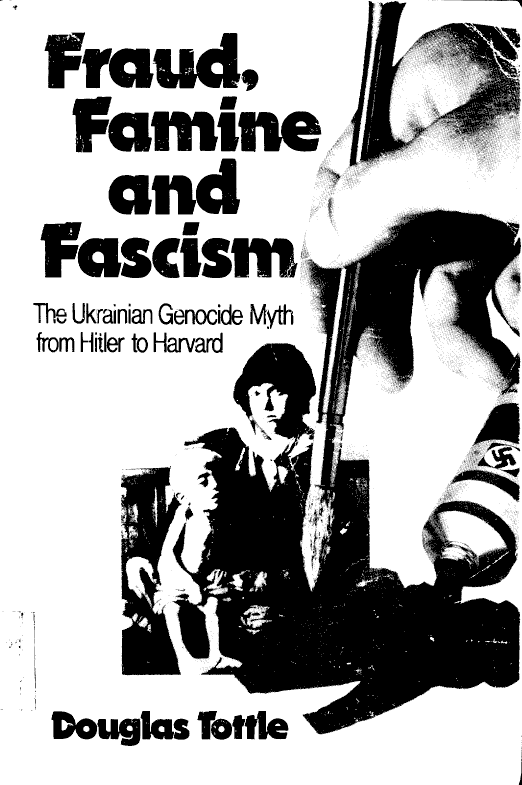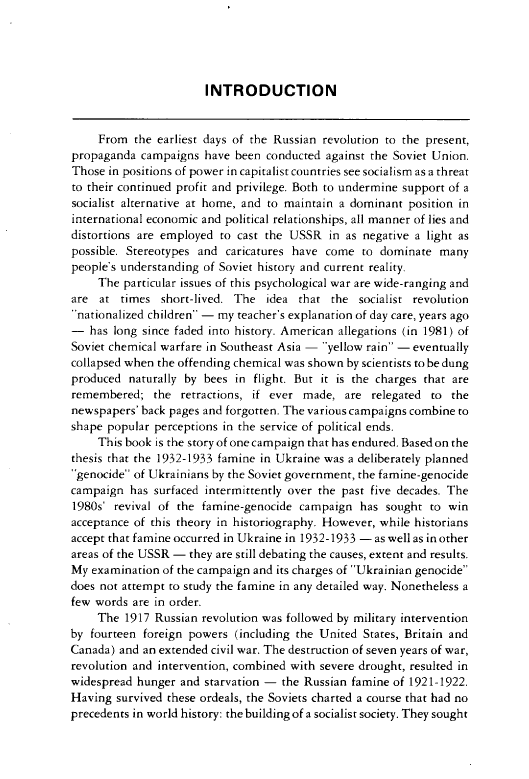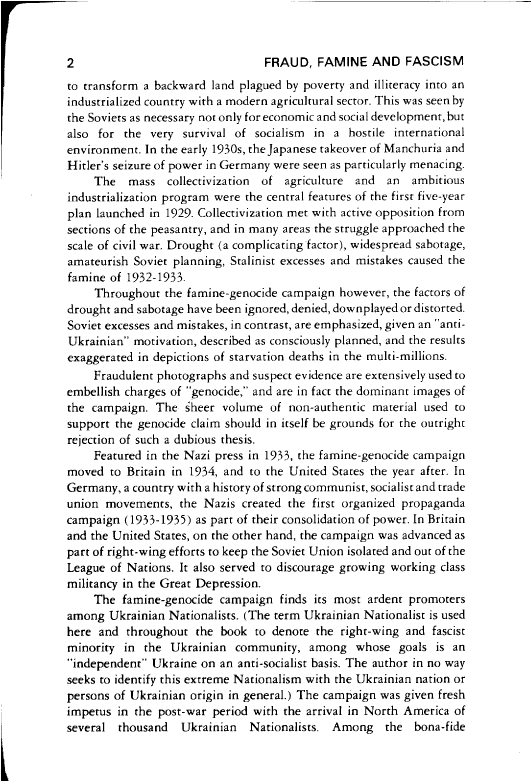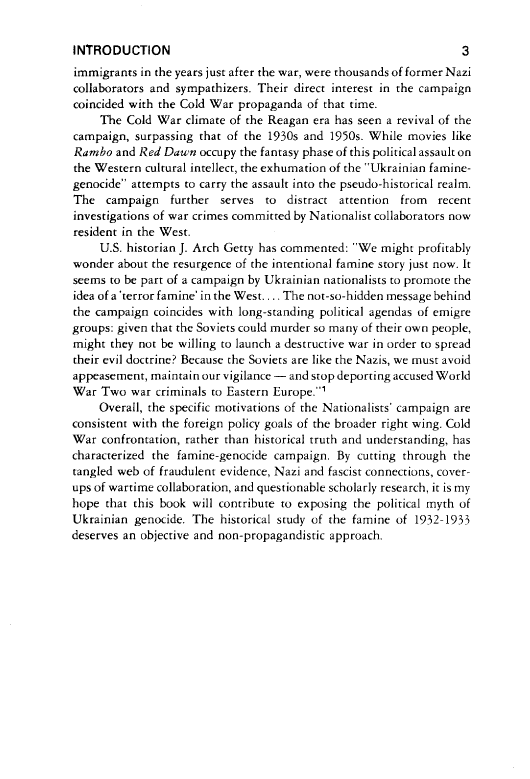Boris Borisov
While America lectures Russia on the 1932-33 famine in Ukraine, Russian historian Boris Borisov asks what became of over seven million American citizens who disappeared from US population records in the 1930s.
RT: What made you research the history of what you call ‘American Holodomor’?
Grapes of Wrath John Steinbeck
http://www.youtube.com/watch?v=xqaTv8cCWeg
http://en.wikipedia.org/wiki/Dust_Bowl
Excerpt:
Millions of acres of farmland became useless, and hundreds of thousands of people were forced to leave their homes; many of these families (often known as "Okies", since so many came from Oklahoma) migrated to California and other states, where they found economic conditions little better during the Great Depression than those they had left. Owning no land, many became migrant workers who traveled from farm to farm to pick fruit and other crops at starvation wages. Author John Steinbeck later wrote The Grapes of Wrath, which won the Pulitzer Prize, and Of Mice and Men, about such people.
The Ukrainian Genocide Myth from Hitler to Harvard
by Douglas Tottle
Published 1987 in Canada
Unlike the rest of the books in this on-line library, I do not physically possess this book. I am including it here, however, because of its importance and its rarity. This book is currently out of print and extremely rare. A worldwide library search reveals that this book is only present in 28 libraries, only one of them a public library, the rest being academic libraries. Of the 28 library locations possessing the book 14 are in America.
This book documents how and why fraudulent stories about the Ukrainian famine of the 1930s made the presses worldwide and have become accepted as fact by almost everyone, despite the fact that they are provably false. The stories of millions of deaths caused by famine in Ukraine in 1933 and 1934, supposedly caused by the effects of the Soviet system, were fabricated by Nazi propagandists in their propaganda campaigns against Bolshevism. The spread of these stories to America took route through the presses of William Randolph Hearst, who has also since been proven, as I have documented on this website, to have been working in collaboration with the Nazis and publishing Nazi propaganda in mainstream American publications throughout the later half of the 1930s and into the 1940s.
These fabrications, which are well documented in this book, have become almost completely accepted as facts by Americans, and these fabrications have been repeatedly used, and are still used, by politicians despite the fact that they are provably false and were provably produced by a Nazi conspirator. The fact that William Randolph Hearst was conspiring with the Nazis during the 1930s is proven outside of this book, and is a part of official American government record, yet his fabricated publications about the Ukrainian famine are still referenced as fact today.
This book does not claim that no famine took place in Ukraine, or that there were not hardships related to the collectivization programs of the Soviets. The book is an examination of the stories published about the famine that did take place, and how those stories became politicized.
 |
 |
 |
 |
Excerpt:
Flaws
In 2003, the Times admitted to journalism fraud committed over a span of several years by one of its reporters, Jayson Blair, and the general professionalism of the paper was questioned, though Blair was immediately fired following the incident. Questions of affirmative action in journalism were also raised, since Blair was African American. Several top officials, including the chief of its editorial board, also resigned their posts following the incident.
In 2004, the Times made another significant admission of journalistic failings, publishing an editorial letter admitting that its flawed reporting during the buildup to war with Iraq helped promote the misleading belief that Iraq possessed large stockpiles of weapons of mass destruction. [1]
A second self-criticism by Times ombudsman Daniel Okrent went further. "The failure was not individual, but institutional," Okrent wrote. "War requires an extra standard of care, not a lesser one. But in the Times's WMD coverage, readers encountered some rather breathless stories built on unsubstantiated 'revelations' that, in many instances, were the anonymity-cloaked assertions of people with vested interests. Times reporters broke many stories before and after the war - but when the stories themselves later broke apart, in many instances Times readers never found out. ... Other stories pushed Pentagon assertions so aggressively you could almost sense epaulets sprouting on the shoulders of editors. ... The aggressive journalism that I long for, and that the paper owes both its readers and its own self-respect, would reveal not just the tactics of those who promoted the WMD stories, but how the Times itself was used to further their cunning campaign." [2]
Excerpt:
Blair, who left the Times in April after numerous inaccuracies and falsehoods were exposed in more than half his stories, was editor-in-chief at the Diamondback during the 1996-1997 school year and was highly praised by the journalism school.
Excerpt:
The Diamondback
Main article: The Diamondback
The Diamondback is the independent student newspaper of the University of Maryland. It was founded in 1910 as The Triangle and renamed in 1921 in honor of a local reptile, the Diamondback terrapin, which became the official school mascot in 1933. The newspaper is published daily Monday through Friday during the Spring and Fall semesters, with a print circulation of 17,000 and annual advertising revenues of over $1 million.[78] It has four sections: News, Opinion, Sports, and Diversions.
For the 2008-2009 school year, "The Diamondback" earned a Mark of Excellence award from the Society of Professional Journalists, placing second nationally for Best All-Around Daily Student Newspaper and first in its region in the same category.[79] Three years earlier the newspaper had finished third place nationally for Best All-Around Daily Student Newspaper and first in its region. [80] Notable journalists who have been with The Diamondback include David Simon of HBO's The Wire and NBC's Homicide: Life on the Street, disgraced Jayson Blair, who was editor-in-chief in 1996 (Blair did not graduate, instead taking a job with The New York Times); Norman Chad, who was editor-in-chief in 1978; cartoonists Aaron McGruder, who first published his cartoon The Boondocks in The Diamondback; and Frank Cho, who began his career with the popular "University Squared" for The Diamondback.
http://en.wikipedia.org/wiki/Huntington_Hartford
Excerpt:
http://en.wikipedia.org/wiki/John_Steinbeck
Excerpt:
http://en.wikipedia.org/wiki/Beach_Jumpers
http://www.amazon.com/Grapes-Wrath-Penguin-Classics/dp/0143039431%3FSubscriptionId%3D06KMPSHEDSXXQMQVT482%26tag%3Daskcom-20%26linkCode%3Dxm2%26camp%3D2025%26creative%3D165953%26creativeASIN%3D0143039431
Excerpt:
http://en.wikipedia.org/wiki/Huntington_Hartford
Excerpt:
http://en.wikipedia.org/wiki/John_Steinbeck
Excerpt:
http://en.wikipedia.org/wiki/Beach_Jumpers
http://www.amazon.com/Grapes-Wrath-Penguin-Classics/dp/0143039431%3FSubscriptionId%3D06KMPSHEDSXXQMQVT482%26tag%3Daskcom-20%26linkCode%3Dxm2%26camp%3D2025%26creative%3D165953%26creativeASIN%3D0143039431
Excerpt:
From Library Journal
Journey with the Joads for 21 hours in this first unabridged version of Steinbeck's classic. Controversial, even shocking, when it was written, the work continues to be so even today. The keen listener can hear why, because it poses fundamental questions about justice, the ownership and stewardship of the land, the role of government, power, and the very foundations of capitalist society. As history, this brings the Dust Bowl years to life in a most memorable way. Steinbeck (Travels with Charley, Audio Reviews, LJ 11/15/94) is a master storyteller and manages to engage the listener's sympathy with this epic story. Reader Dylan Baker, who gives each character a distinctive voice, draws the listener in. His female characters, especially the minor ones and Rose of Sharon, don't seem as authentic as his wonderful evocation of the fictional Tom, Ma, and Pa. But his voice is easy to listen to, and he is faithful to the characters' backgrounds and the plains region. The music that ends each individual tape is perfect for the story. This program is a well-produced, affordable, and worthwhile addition for any library with a serious audiobook collection.?Nancy Paul, Brandon P.L., WI
Copyright 1999 Reed Business Information, Inc. --This text refers to the Audio Cassette edition.
Copyright 1999 Reed Business Information, Inc. --This text refers to the Audio Cassette edition.
Review
Novel by John Steinbeck, published in 1939. Set during the Great Depression, it traces the migration of an Oklahoma Dust Bowl family to California and their subsequent hardships as migrant farm workers. It won a Pulitzer Prize in 1940. The work did much to publicize the injustices of migrant labor. The narrative, interrupted by prose-poem interludes, chronicles the struggles of the Joad family's life on a failing Oklahoma farm, their difficult journey to California, and their disillusionment once they arrive there and fall prey to a parasitic economic system. The insularity of the Joads--Ma's obsession with family togetherness, son Tom's self-centeredness, and daughter Rose of Sharon's materialism--ultimately gives way to a sense of universal community. -- The Merriam-Webster Encyclopedia of Literature --This text refers to an out of print or unavailable edition of this title.

No comments:
Post a Comment